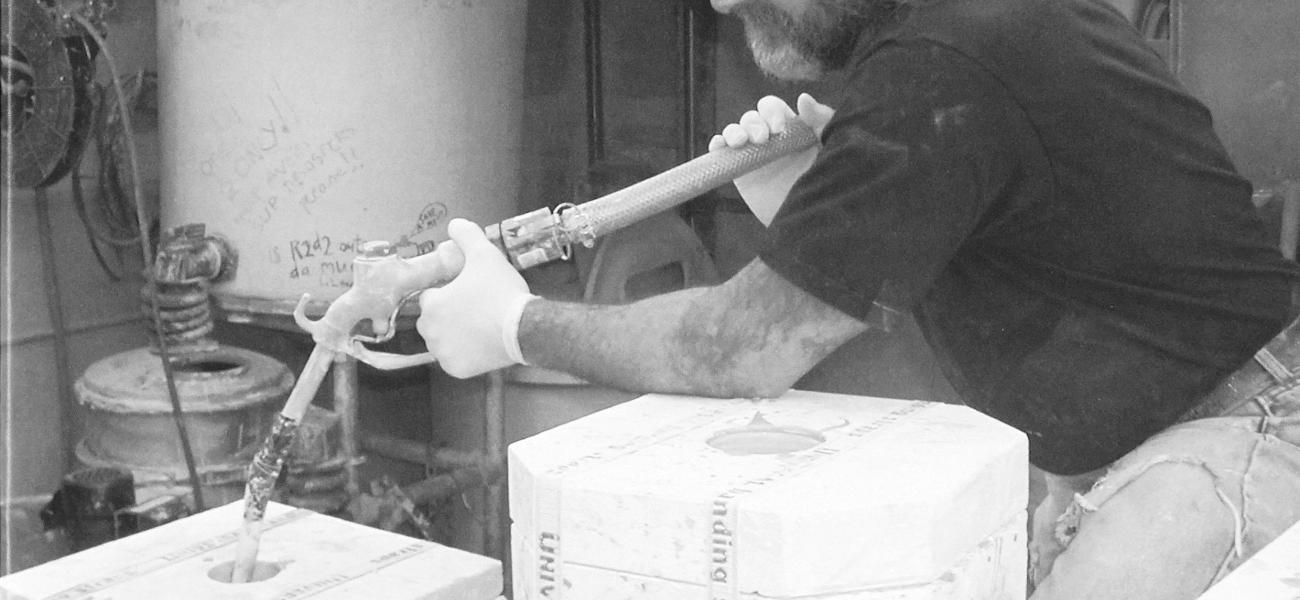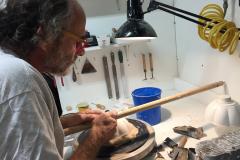Financial Considerations Notwithstanding
I am often reminded of the opening scene in the movie Out of Africa: as the camera pans over spectacular country, we hear, in a voice-over, "I had a coffee plantation in Africa." That simple statement resonates quite strongly with me. For fifteen years, I had a ceramics-manufacturing business in the Colorado mountains. I am distant now from that time, but I have brought with me a profound history of learning that I refer to quite often. Although my present life as a studio artist and gallery owner is quite different from those hectic and heady days, I revisit those memories from time to time.
Beneath the recollections of casting, RAM pressing, jiggering, mold-making, and the other activities of running a manufacturing business, I hear a small voice in my mind saying "When money enters the ceramics equation, everything changes." While that may not be so true for everyone in our field, what I encountered (or for that matter, what I created) in those fifteen years was deeply impacted by money.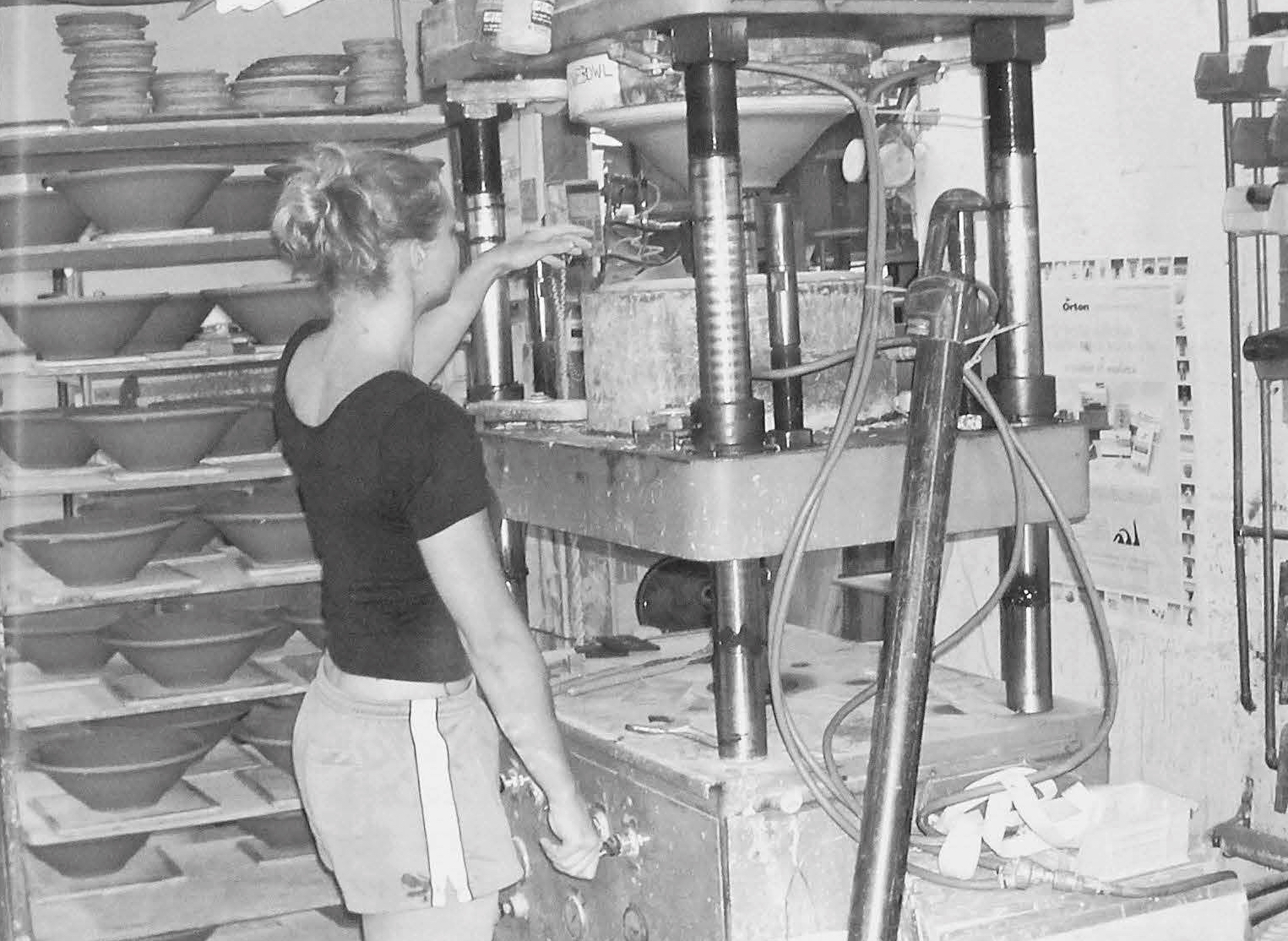
The daily activities of maintaining a production schedule were juxtaposed with the careful monitoring of cash flow, slow accounts-receivables, bill-paying, ponderous accounting, and a biweekly payroll, to mention just a few. There were always employees' issues and my concerns with them.
Over time I was able to delegate many of these activities to others, but the need for a healthy and consistent cash flow insinuated itself into most everything.
I have often felt that we are ill-prepared for how our careers develop. We are presented with opportunities that challenge and situations that seem to offer great potential for success, but there are so many different ways to measure success. When we choose to be potters or ceramic artists we also must choose to be business people. Unfortunately, we seemingly have very few examples that can offer us practical guidance.
The ability to make things and the ability to run a business derived from sales of ceramics sometimes seem mutually exclusive. But our business is really not that different from making, selling, or providing any other product or service. It is a matter of scale and a deep personal involvement and commitment. One could call it accountability.
Some of us follow an academic path to clay. Alternatively, we may choose a nontraditional education experience: an apprenticeship, mentoring program, or workshops. Regardless, should we desire to continue on that path we must decide how to form the next part of our careers in clay. We don't work in an economic vacuum, and after relying on the largesse of friends and relatives to purchase a few pieces of our work, we need to choose a path in clay that is rewarding mentally, spiritually, and financially.
I came to be a ceramics manufacturer through the back door, after a successful career as a production potter in Pennsylvania from r975 to 1988, a time when there was a growing demand for handmade functional ware. Sales were brisk through both wholesale crafts events and retail art fairs.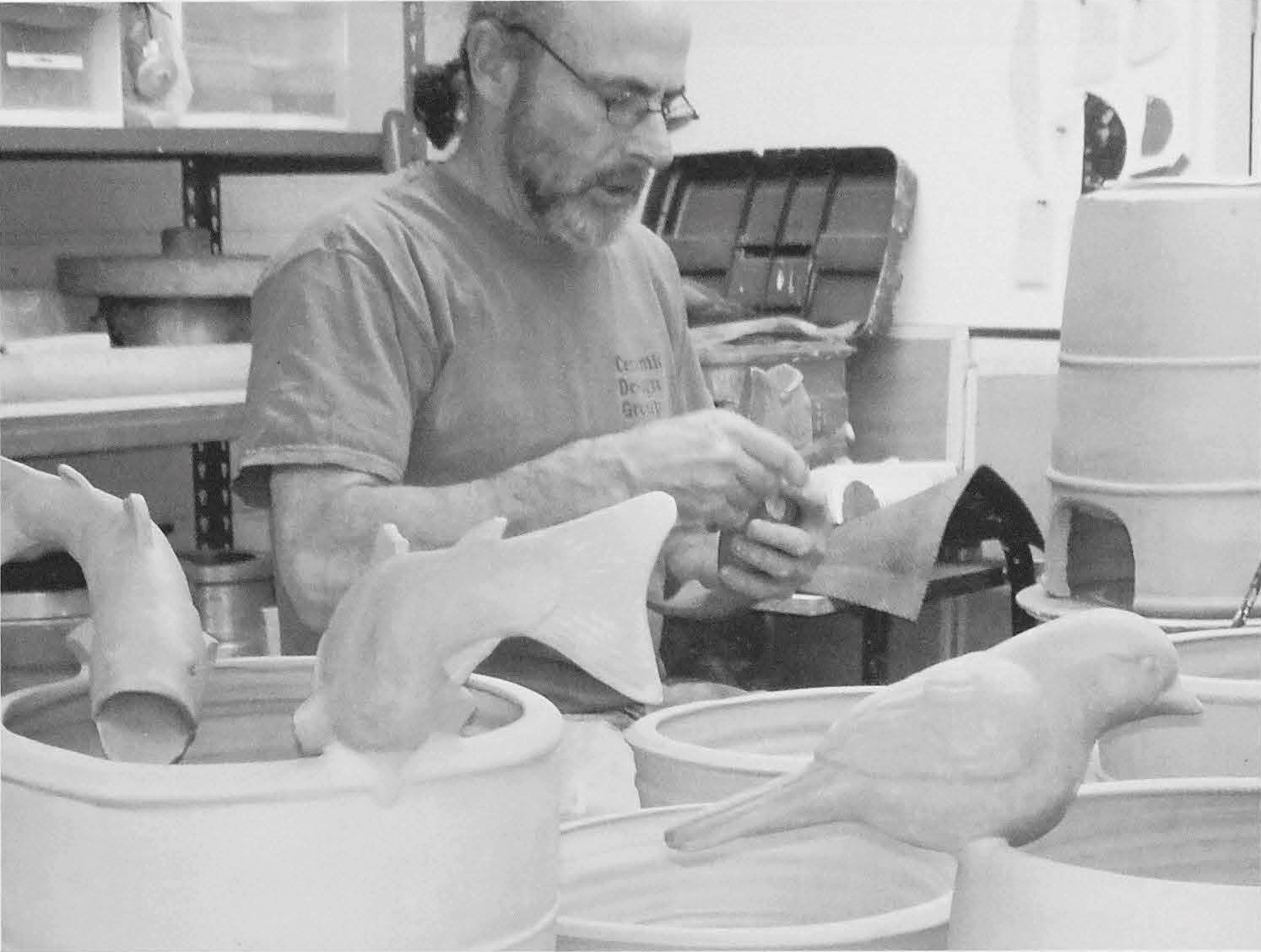
Eventually this life wore thin, and I needed a break (see "Burnout!" in The Studio Potter, December 1989). I moved to Colorado and began a new career in the recreation industry, working as a ski technician and bicycle mechanic from 1988 to 1990. It did not take me long to realize that other people's vacations were of little interest to me, as was selling ski couture.
I did not wish to live a life of unrequited ambition and unrealized expectations, so I followed my passion and returned to being a potter. After starting a small studio, I found that the terra-cotta work I was making did not have the appeal of my earlier stoneware. Times had changed. If I wanted to continue to work in clay, my best option was to combine my plaster skills with those of a production potter to make things for others. After a few years, I became known as "that guy in Colorado who can make your work."
I was able to sustain myself and my employees for fifteen years as a manufacturer. Business was good, and it was consistent. I never lacked for work to keep me busy as a mold and model maker, or to keep my employees occupied running the RAM press, pouring slip, running the jigger/jolly machine, finishing work, or firing kilns.
I was a generous employer, providing a decent wage, flexible schedules, and perhaps most coveted of all in a ski town, a full-season ski pass to my most trusted and responsible employees. My business, Ceramic Design Group, offered full ceramics production to diverse clients from the horticultural, lighting, giftware, and tabletop industries, as well as to potters. I provided both bisque-fired and fully glazed ware in any clay body, fired at any temperature, in any atmosphere. Proposals for projects came in many forms, from crude sketches on napkins to highly detailed technical drawings. Most projects required a nondisclosure agreement between my company and the client to insure intellectual property rights. Project proposals spelled out design and tooling costs for the method of reproduction (either slip-casting, jigger/jollying, or RAM pressing), the unit cost of each item, packing and shipping fees, and finally, the scheduling of the project. Proposals were time-consuming and detailed, and furnished at no cost to a prospective client. My business was built upon healthy relationships and full transparency with every customer. There were a few clients who were extremely difficult to work with, but these were outnumbered by the many who were respectful and respected, and who understood the many variables in each project. As their manufacturer, I was responsible and accountable for timely delivery, at the agreed-on price, of work that exceeded expectations. And this is what we did successfully for many years. I grew my business in small increments, making many mistakes but learning from them each time.
Even though I had employees, to my customers I was Ceramic Design Group, the one with whom they interfaced. I was also the one they trusted to determine the outcome of their project, their idea, or their design. Clients paid me thousands of dollars to make molds and dies for their project before even one piece was made. I was the one who held the clients' hands whenever they were consumed with doubt, fear, and indecision, providing domestic manufacturing of their ceramic work at a substantially higher cost than companies from the Pacific Rim or south of the border.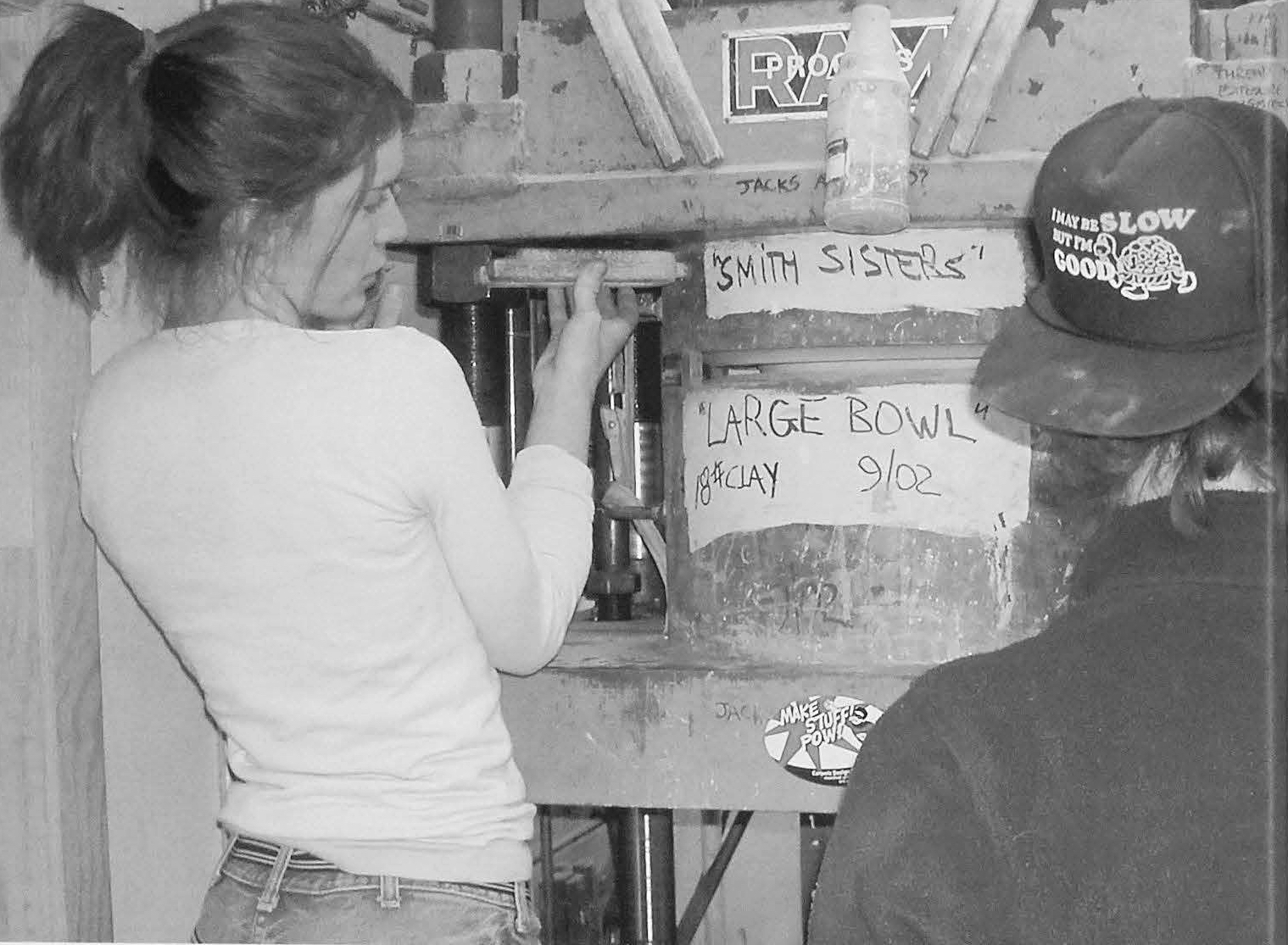
I, too, had doubts. These never concerned the actual logistics of making ceramic work and moving the many pieces through the stages of production. That was the easy part. Not enough space on a shelf? Build a few more ware carts. Not enough firing capacity? Buy another kiln and more kiln furniture.
Although each project had a learning curve, my fears usually focused on my ability to accurately determine the cost of each piece. This quest led me to accountants, bookkeepers, and others with sage advice on how to implement a method for determining a unit cost for each item that we produced. Easier said than done.
Overhead is perhaps the most important part of every business in determining the price of what that business produces. Our overhead at Ceramic Design Group included materials (clay, glaze, and all), labor and payroll, utilities, debt service, and taxes, to mention just a few. Then there is profit - what we make on each piece - which is included in the price we charge the client.
How do you calculate the price of a slip-cast mug? A RAM-pressed, glazed bowl? A first sample cast vase? Even though assisted technology helps form a piece, someone's hands touch it over and over, and there is a cost for that "touch" that needs to be included in the price of the object. I think that potters have an intuitive idea of what something should cost. That, however, may not be what the item needs to cost. I learned in my days as a production potter that many potters do not account for their labor in calculating what to charge for their work.
I did not work for free, and of course it would be both humorous and counter-productive to expect my employees not to receive a living wage. And what if these items we made are sold to a distributor that resells them to a store or catalog? The price is again marked up. This standard practice of doubling the price at each stage of distribution might make an item unaffordable for a customer.
After working with accountants, bookkeepers, and small-business consultants, I arrived at a method that seemed to provide a framework for pricing. Using an Excel spreadsheet, I was able to insert all the costs for a project at each stage of production.
The labor expenses were factored in as minutes needed for every operation. Taxes, insurance, utilities, and other overhead items had constants assigned to them but could be changed if required. The number of employees required to produce something and such variables as the actual percentage
of an hour that an employee worked could also be adjusted. Then the spreadsheet with all its complicated embedded formulas calculated a "price." If it looked too high, I adjusted the profit or changed the number of employees working on the project. If it looked too low, I increased the price. Not an exact method for sure, but it worked adequately for many years, and kept the work we made both competitive and profitable. It also provided a snapshot of where the dollars and cents went, so to speak, for every piece of pottery that we manufactured.
It was quite revealing. Labor, payroll, taxes, utilities, and insurance constituted a large portion of the cost of every mug and bowl - in fact, of everything we produced. Clay, glaze, and firing costs were minimal.
Tooling was always separate from the per-piece cost. Clients often balked at the high price of molds, dies, and models. I could not amortize these into the cost of each item, because some of our projects involved too small a product run. Part of my job was to convince clients that without an accurate model, RAM die, or block and case mold and sufficient working molds, I could not efficiently produce their ceramic widget. Whether we were making 100 or 1,000 reproductions, tooling was required.
I realized very early into my journey as a ceramics manufacturer that molds and models were the profit center for the business, not the actual making. Molds and models moved cash through the business and paid my bills. Margins were very tight. I learned some very important things in my tenure as a manufacturer of clay items. These might seem very basic to others in the manufacturing sector, but manufacturing was not my background. Here are just a few:
Small items, such as mugs, bowls, figurines, and saucers, need to carry less overhead per piece than larger items, which must absorb more of your overhead. • Everything - every activity, in fact every "every" - needs to be accounted for in calculating the cost of making a piece. All items must carry a portion of overhead in order for the business to earn a profit. Some items are more profitable than others. Even though a mug seems simple, it is complicated and labor-intensive to manufacture. No wonder there is so little domestic ceramics manufacturing left in the United States.
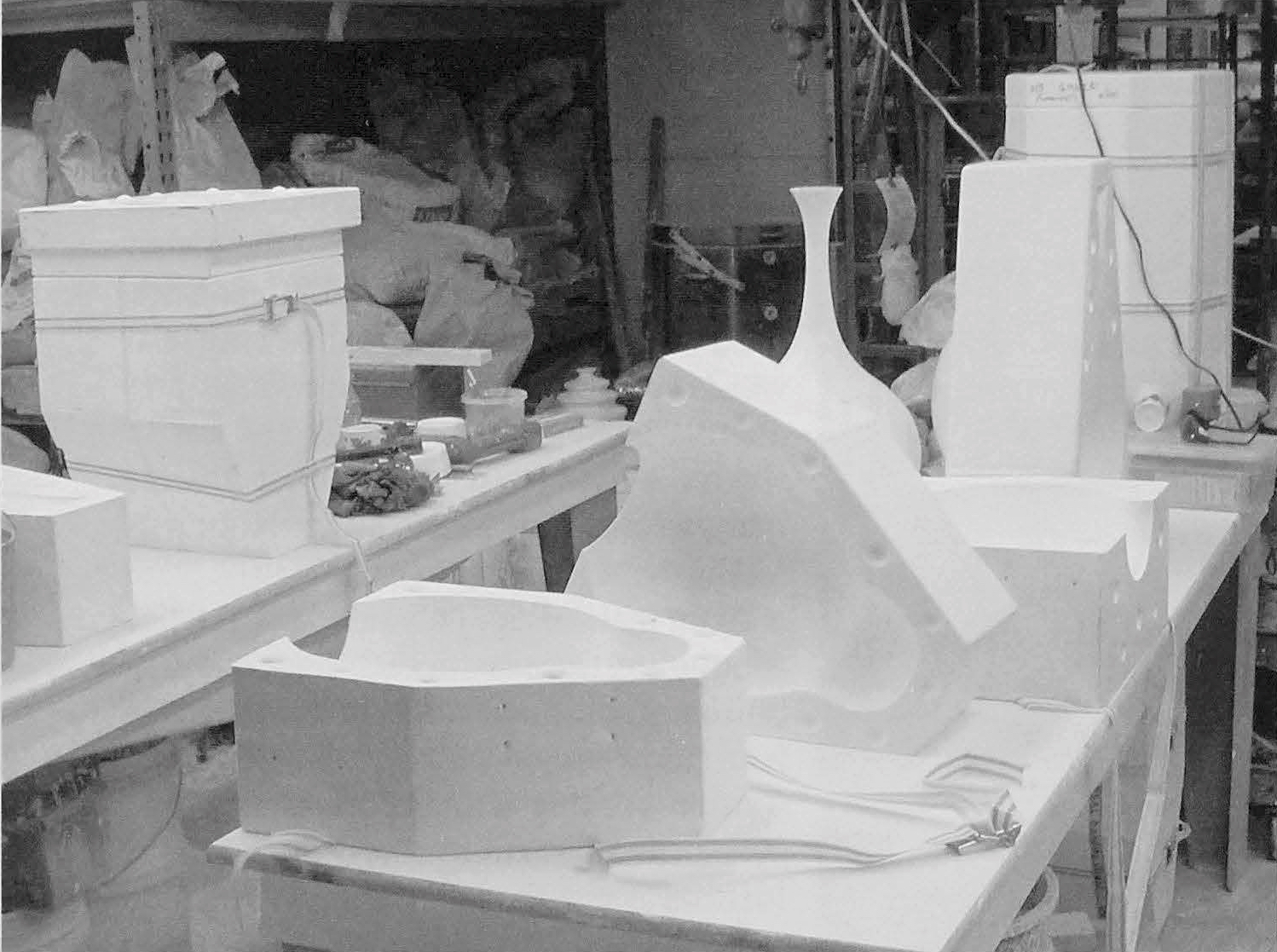
Learn to say no. You can't be all things to all people. Some items are inherently too labor-intensive and cannot be made cost effectively. Clay might not be the best or appropriate material for those items - or you might not be the best producer.
Everyone wants a discount, no matter the volume. When margins are thin, any discount whatsoever impacts profit. And margins in making clayware reproductions are very thin.
Learn to accept your limitations and own your mistakes. If a project goes south for whatever reason, take full responsibility and refund the customer their money. Your success in business, no matter what the business is always built upon healthy relationships and open communication. And the most important lesson I learned:
Money changes the nature of being a potter.
Why? What is it about "the money" that changes our relationship to the work?
What is it about being in the pottery business that many find so difficult?
We assume that those same personal qualities that we embrace in being potters will be equally relevant when we become business people. We are deeply enmeshed in the values of pottery-making, but these values may not transfer very well into the business of pottery-making. Those left-brain activities may not be compatible with those of the right brain, and vice versa. Further, the qualities, values, and activities that are important to us as potters, as makers of intimate objects, may not be compatible with those of the business world. There is no right or wrong, just different.
What we produce doesn't change. The commitment to staying accountable, to maintaining a high level of integrity and quality in our work, should always be present. I brought these same values to my manufacturing business: the work must be made without compromise, impeccably crafted and without any defects. While the manner of making pottery in a manufacturing environment is different, what changes most are the external minutiae that enmesh us and impact everything from content to execution. This thinking has led me to some important questions. Can we be artists and manufacturers at the same time? Manufacturing is an art unto itself, and the manufacturing of ceramics requires a different skill set than that of an I artist. These skills are intimately entwined, but very different. How do we devote equal time and energy to the making of pottery and the running of a pottery business? How do we stay accountable to each without compromising either? And how do we maintain a balanced life outside of our careers?
I think it is possible to be a one-person business while maintaining a consistent and balanced vision. But both time and energy are finite entities. How we deal with the myriad choices that present themselves along with the desire to see our businesses grow is really an important question. Bigger is not necessarily better. We need to stay accountable no matter what the scale of our pottery-making activities. Perhaps the overriding concern is the impact the economy will have on ceramics artists and manufacturers.
Being able to change and adapt quickly is an admirable and essential skill. Back in the early days of the handmade crafts explosion, there was always talk of how to grow a pottery business. We all had visions of "bigger is better" and thought that making more work would translate into greater sales, everything else in our lives notwithstanding. My good friend and colleague, potter Tom Mason once quipped in his Texas drawl, "Just because you can afford a RAM press does not mean it will make the process any easier. It does not have a conscience or a soul. It just makes more pots. You will still need to trim and assemble them." Tom was quite right. I grew my pottery-making business by making more for others, until I decided I needed to return to being a ceramics artist. I needed to be accountable to myself only and not to my clients. I wanted those "more pots" to be my pots, and my time to be just for me. In June of 2006,1 stopped working for others.
It was quite a ride while it lasted. I am no longer "that factory guy," yet there are times when my thinking gravitates towards that time in my life. I no longer have the headaches of employees or the money issues involved with running a manufacturing business. I don't need to have skids of clay and quantities of equipment, although I do have quite an impressive collection of ten-pound containers of Mason stains! I still look back to my years as Ceramic Design Group and feel privileged that I could give back, using my skill and talent to help so many people develop and market their ceramic products.

